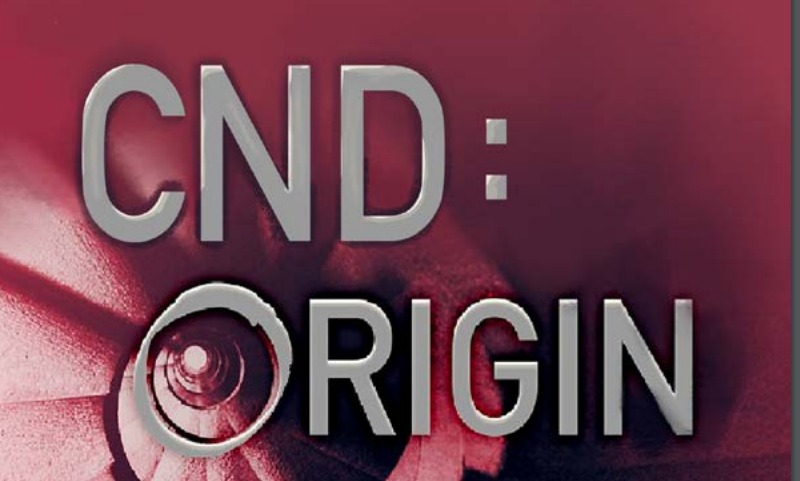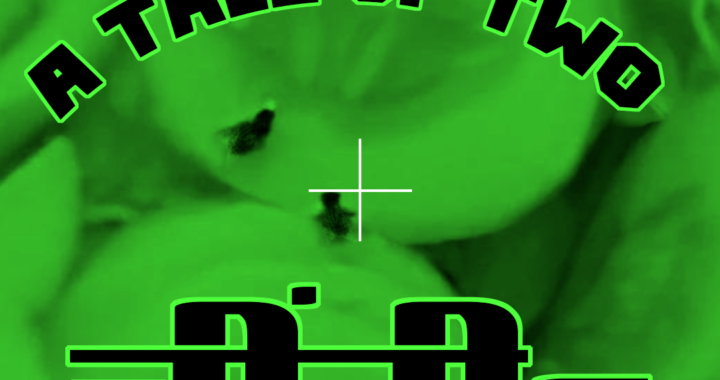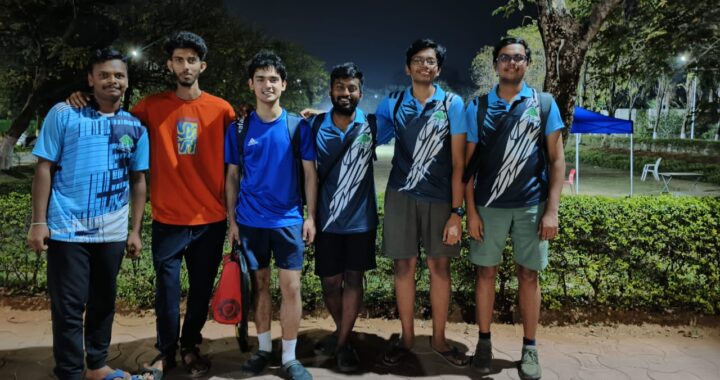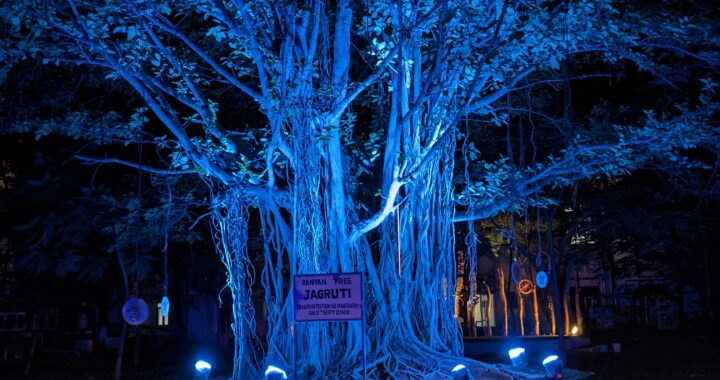CND: Origin

Introduction
It has been over ten years since the emergence of the Computational Natural Sciences Dual Degree program, commonly referred to as the CND program. This program’s nature is not known to many, especially outside of IIIT-H, due to this program’s distinctiveness, with few counterparts in other Indian colleges. The unique nature of this program raises the question of its genesis.
To get the answers to our questions, we interviewed some of the professors who played a pivotal role in setting up this program – Prof Abhijit Mitra, Prof Harjinder Singh, Prof Prabhakar Bhimalapuram and Prof Deva Priyakumar. This article covers the history of bioinformatics and natural sciences at IIIT-H, as well as other interesting events that capture how the institute has evolved alongside the CND programme.
Conception of CND
Despite being an Information Technology institute, IIIT-H understood that a university is not just an expanded computer science department. Hence the institute offers transdisciplinary programs, connecting different domains with computer science. CLD (Computational Linguistics Dual Degree) was the first interdisciplinary program offered by IIIT-H at the undergraduate level, followed soon by CND.
But CND wasn’t the first program in IIIT-H which integrated computers with pure sciences. There were several attempts to attend to the needs of people who are good at both natural sciences and computer science. Even though it might sound surprising to some, the origin of this program is actually tied closely to bioinformatics.
IIIT-H and Bioinformatics (before 2006)
Bioinformatics became the new “trend” in the late 1990s – early 2000s period. The focus was slowly being shifted from information technology to biotechnology in many parts of the world, just around the period when the institute was founded.
In our conversation with Prof. Mitra, he tells us that back then Bioinformatics dealt with a large amount of data and pattern recognition gathered from experimentation. In most cases, the database is so huge that it requires extensive expertise on databases besides different analysis algorithms, neural networks and other models. It didn’t consider the underlying chemistry or mechanisms of the processes; it is just about finding correlations from the patterns. On the contrary, Computational Natural Sciences utilises calculations and concepts in chemistry and physics to run simulations and derive results.
The emergence of bioinformatics in IIIT-H is marked by the MSIT program (Master of Science in Information Technology), which was a multi-university program started in 2001 in collaboration with various institutes in Andhra Pradesh/Telangana (JNTU Hyderabad, JNTU Kakinada, JNTU Anantapur, SVU Tirupati) under Carnegie Mellon University (CMU). This program covers many fields, including Machine Learning, Data Science, Software Engineering, etc. but the Bioinformatics branch was set up in IIIT-H.
This was initiated by Prof Raj Reddy. (As of now, Dr Kishore Prahllad is overseeing this program on behalf of IIIT Hyderabad.) MSIT is a program for BCA (Bachelor of Computer Applications) and MCA (Master of Computer Applications) students. It started out as a diploma but was later converted to a collaborative (IIIT-H + CMU) degree.
Around the same period, the Bioinformatics Research Centre (BiRC) was set up at IIIT-H. Dr Nita Parekh, who earlier used to give guest lectures for MSIT, joined IIIT-H as a faculty. Along with Dr Abhijit Mitra, she consolidated the MSIT program and the bioinformatics research centre. In fact, the credit for most of the ventures related to bioinformatics goes to these two.
The next program that was started was MTech (Bioinformatics) in 2004. It was accompanied by a proposal for BTech (Biological Sciences) in collaboration with NCBS Bangalore, but unfortunately, that did not work out.
MTech (Bioinformatics) program continued till last year but got discontinued with effect from 2020 batch. It is a possibility that this program might resume at some point in the future, or be replaced with a similar program.
This was followed by a 4-year MS by Research program, which was proposed for post-BSc students. It was implemented around 2006 and had a total of 3 batches of students before getting discontinued at the start of the CND program.
Transition to CNS (2006-2009)
Dr Harjinder Singh joined IIIT-H in 2006 and was the leading light in preparing the vision for Computational Natural Sciences. It was realised that even though bioinformatics is a vast area, it has limited possibilities in combination with computer sciences; and that Computational Natural Sciences would be a better domain integration. Envisioned to be more than just bioinformatics, BiRC was converted to CCNSB (Centre for Computational Natural Sciences and Bioinformatics) in 2007. Dr Harjinder formally took over as the centre head, in 2010.
Dr Abhijit Mitra and Dr Harjinder Singh were acquaintances from their time at IIT Kanpur. They had met after nearly 25 years by chance at the guest house in IISc, Bangalore, where they had gone for a conference. The two had an ardent discussion about the new possibilities emerging at IIIT-H at that time. Soon after this discussion, Dr Harjinder Singh, who was earlier a professor at Panjab University, Chandigarh, joined IIIT-H upon the request of former director Dr Rajiv Sangal.
Dr Prabhakar Bhimalapuram, who would soon play an instrumental role in setting up the CND program, joined the institute in 2008. Dr Deva Priyakumar joined around the same time and would be the key person for generating funds for enhancing the computational facilities at CCNSB.
Discussions about an IT + CNS Dual Degree began soon after this among Dr Mitra, Dr Harjinder, Dr Prabhakar and Dr Deva, and the curriculum was designed. The idea behind having these courses right from the undergraduate level was that high school graduates are students who can easily be trained in both domains and weren’t afraid of either. There was a great push towards computer science in the nation, but many students remained interested in science. The CND program offered a way for students to do both at the same time.
After multiple rounds of discussion about the course pattern, the CND program was created in 2009.
To balance the domains of IT and CNS, a few of the computer science courses were removed, and B Tech CSE turned to B Tech CS, as science courses and computational courses were added. After the first few semesters of building the foundation, students can decide which sub-areas to work on by choosing their electives and can gain expertise in the fields in which they will eventually work for their thesis.
A lot of professors joined during this time, including Dr Tapan Sau, Dr Subhadip Mitra, Dr Marimuthu Krishnan and Dr Vinod PK, among others. This addition provided an even larger variety of subjects taught in the institute. Dr Tapan Sau, who was the only experimentalist to join the institute around the time the CND program was conceived, had noteworthy contributions in developing the physical labs at IIIT-H.
A major concern initially was running a science program without a science lab. The institute had applied for a grant to the Department of Science and Technology (DST), Government of India, under the scheme “Fund for Improvement of Science & Technology Infrastructure (FIST)”. DST accepted the proposal drafted by Dr Mitra, Dr Harjinder, Dr Prabhakar, and Dr Deva, and a grant of ₹77 Lakh was awarded in the year 2009. But since IIIT-H is a private institute, the institute was asked to self-fund 50% of it. This had lead to a lot of debate, and by the time these funds were organised, the grant offer was revoked. In the end, it was an AICTE virtual lab project years later that brought in the funding for the project. This project, which is still ongoing, set up virtual labs for all of IIIT’s research centres, where students can run simple experiments and understand related concepts.
The planning for the science lab was already in progress long before 2009. Prof R. Jagannathan, a retired faculty from the University of Hyderabad, had joined IIIT-H temporarily solely for the purpose of planning out and setting up the science lab. The initial funds for this came from Prof Harjinder’s virtual lab projects. Prof Jagannathan left the institute almost a year later, soon after Prof Tapan had joined.
CCNSB is closely linked to the CND program, not only because it is the lab where a vast majority of CND students work for their thesis but also due to the self-evident fact that the origin of CND is tied to the origin of CCNSB. Hence this article about the CND program would be incomplete without talking more about CCNSB.
More about CCNSB
Applying state of the art computational techniques to fundamental problems in physics, chemistry, and biology has always been the general thought behind the research done by CND students. Today, the scope of research at CCNSB has spread to a wide variety of fields, including but not limited to high-energy physics, quantum information and computing, statistical mechanics, systems biology, computer-aided drug design, genomics, protein networks, and so on. In the last three years, the centre has moved into applying modern machine learning methods in areas of drug design, quantum-mechanical problems, and healthcare initiatives.
These problems require powerful computational facilities as well, which arrived alongside the CND program and CCNSB.
CCNSB and HPC at IIIT
Dr Deva spearheaded the arrangement of the central facility for computation. His first visit to the campus wasn’t until he had already joined as a faculty member, so he didn’t know about what facilities were present here. His work prior to joining IIIT-H depended a lot on high-performance computing (HPC), but when he joined, he realised that even the main server was running on a desktop PC and that there weren’t any servers capable of high-performance computing.
With the grants that he and Dr Harjinder managed to get, an 11-node CPU cluster was arranged and named “Adhi” because it was the first set of HPC servers. Gradually, more computers were added and eventually, Adhi became a 60-nodes cluster.
Dr Deva then talked to Dr PJ Narayanan, who was the Dean (Research) at that time, about getting more computational facilities. In the early 2010s, the institute invested in the next set of machines. “Abacus” came into being as a central facility. Since then, a new cluster, named “Ada” after Ada Lovelace, has emerged with over 40 nodes. The nucleation of any big thing has to start from somewhere, and in the case of high-performance computing in IIIT-H, it all started from CCNSB.
Present and Future
It’s interesting to see how computational natural sciences at IIIT closely aligned itself with various milestones at IIIT. Today, the CND program has over 70 students, with an increasingly competitive student pool. As the years have gone by, a project that started out with humble beginnings has begun to have a bigger societal impact as well.
For instance, recently, CND students, along with other researchers of CCNSB, have been working on COVID-19 related research. It has come a long way over the past year, and it is interesting to see how it will continue to grow. Some of the recent projects involve the collaboration with Intel, Max Hospitals and a few other organisations to investigate Indian resistance to COVID-19. They also worked on algorithms to determine whether the patient is at high risk or low risk early on. This was just one of the many ways the lab has contributed to this cause.
All the advancements in these fields have been possible due to the unique amalgamation of sciences with computer science. It would be interesting to see where this program goes in the next few years as this field continues to develop.
Thanks to Rishabh, Shahbaz, Mahathi for their contributions in the initial phases of the article, and to Jaidev for being an awesome editor.
Editor: Jaidev Shriram


 Qu’ils mangent de la grenouille! (Let Them Eat Frogs!)
Qu’ils mangent de la grenouille! (Let Them Eat Frogs!)  Tale of Two Cheenties
Tale of Two Cheenties  Peace of mind.
Peace of mind.  Boats and Valorant
Boats and Valorant  Blessings
Blessings  Shivering in the sunlight
Shivering in the sunlight  A perspective on sports in IIIT
A perspective on sports in IIIT  Paintings of IIIT
Paintings of IIIT  The Tale of Jagruti
The Tale of Jagruti  Cleaning up the Mess?
Cleaning up the Mess?
1 thought on “CND: Origin”
Comments are closed.